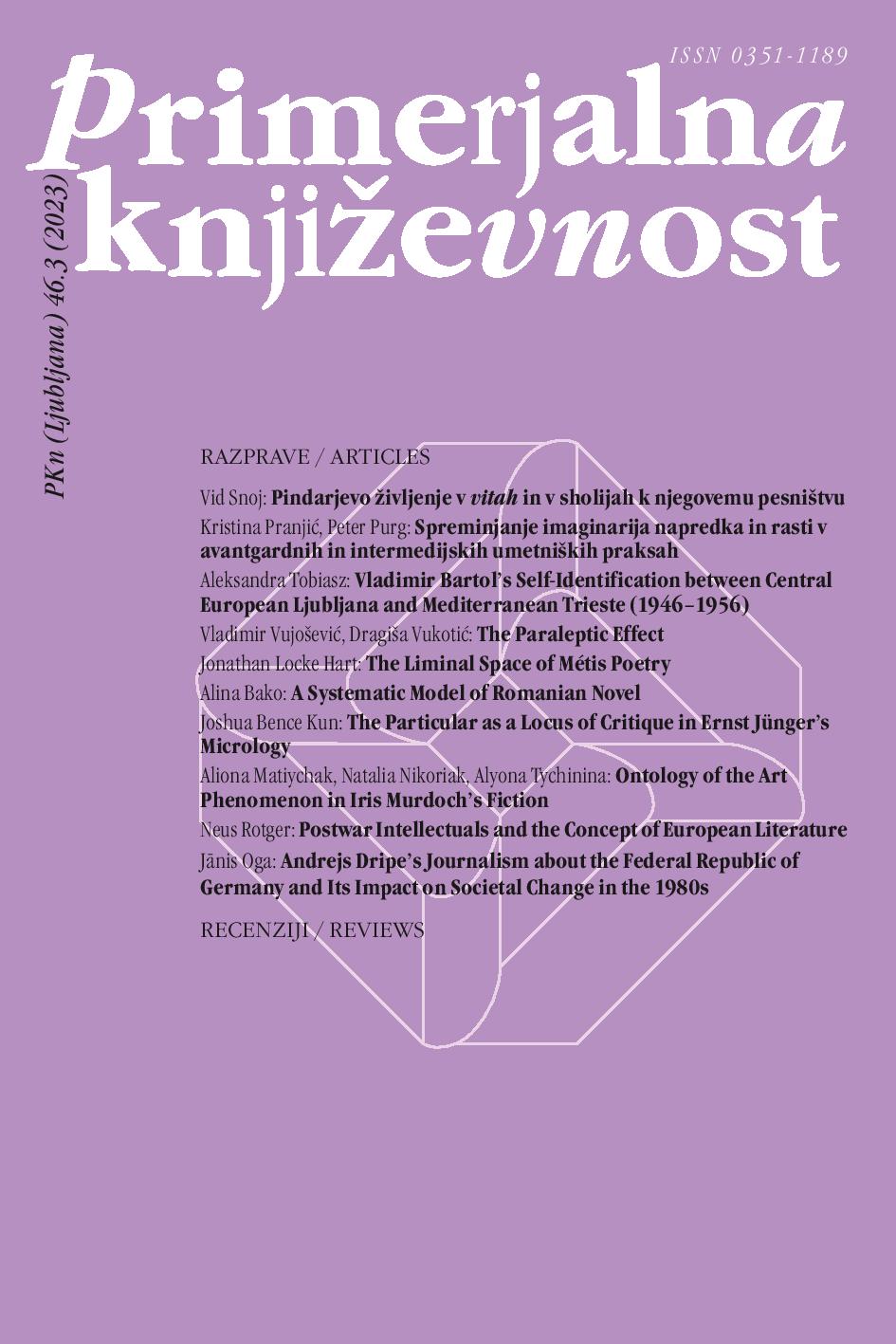Cities, Networks, and Hierarchies: A Systematic Model of Romanian Novel
DOI:
https://doi.org/10.3986/pkn.v46.i3.06Keywords:
Romanian literature, Romanian novel, imagology, city, networks, hierarchies, systemic modelAbstract
This article sets out to observe the manner in which using the city as a narrative scenario can determine the creation of a systemic model of knowledge. Based on Morillo’s theory that urban spaces can be analyzed by observing the interaction between the networks they belong to and the hierarchies they form, eventually becoming “hubs of knowledge,” we try to prove that the Romanian novels of the late nineteenth century and the interwar period are valuable points of reference for sketching a systemic model of the South-East European space. The specificity of Romanian literature, reflecting historical conditions and relations with empires such as the Austro-Hungarian or Ottoman empires, as well as the constitution of labor relations through the transition from rural to accelerated urbanization produces a viable matrix. These aspects can be encountered in the novels of Romanian writers such as Ioan Slavici and Liviu Rebreanu, who reflect the reality of the Transylvanian space and the relations between the communities of Romanians, Germans, Saxons or Swabians, Hungarians and Jews, to Hortensia Papadat-Bengescu, the writer who creates the image of Bucharest as part of the European urban network, even if it is hierarchically subordinate to Paris.
References
Agathocleous, Tanya. Urban Realism and the Cosmopolitan Imagination in the Twentieth Century. Cambridge: Cambridge University Press, 2011.
Bako, Alina. “Geocritical Readings of Romanian Literature: Maps and Cartography in Rebreanu’s Canonical Fiction.” The Slavonic and East European Review 99.2 (2021): 230–255.
Bulson, Eric. Novels, Maps, Modernity: The Spatial Imagination, 1850–2000. New York, NY: Routledge, 2006.
Casanova, Pascale. The World Republic of Letters. Cambridge, MA: Harvard University Press, 2004.
Derrida, Jacques. “Plato’s Pharmacy.” Dissemination. London: Athlone Press, 1981. 61–172.
Eade, John. Living the Global City: Globalisation as Local Process. London: Routledge, 1997.
Finch, Jason, Lieven Ameel and Markku Salmela, eds. Literary Second Cities. Cham: Palgrave Macmillan, 2017.
Iorgulescu, Mihail. “The Economic Element in Slavici’s Work.” Marginalia. Bucharest: Casa Şcoalelor, 1943.
Lehan, Richard. The City in Literature. Berkeley, CA: University of California Press, 1998.
McNamara, Kevin. The Cambridge Companion to the City in Literature. Cambridge: Cambridge University Press, 2014.
Morillo, Stephen. Frameworks of World History: Networks, Hierarchies, Culture. Oxford: Oxford University Press, 2013.
Negoițescu, Ion. History of Romanian Literature: Volume I (1800–1945). Bucharest: Minerva, 1991.
Papadat-Bengescu, Hortensia. Opere (Works). Bucharest: Romanian Academy, 2012.
Quayson, Ato, and Jini Kim Watson. Colonial Modernity, and World Literature in “The Cambridge Companion to the City in World Literature”. Cambridge: Cambridge University Press, 2023.
Rebreanu, Liviu. Opere (Works). 22 volumes. Bucharest: Minerva, 1970–2003.
Rooney, Brigid. “Haunted Vitality: Sydney.” Colonial Modernity, and World Literature in “The Cambridge Companion to the City in World Literature”. Eds. Ato Quayson and Jini Kim Watson. Cambridge: Cambridge University Press, 2023. 279–295.
Slavici, Ioan. Opere (Works) 1–2. Bucharest: Minerva, 2003.
Soja, Edward W. Thirdspace: Journeys to Los Angeles and Other Real-and-Imagined Places. Oxford: Blackwell, 1996.


